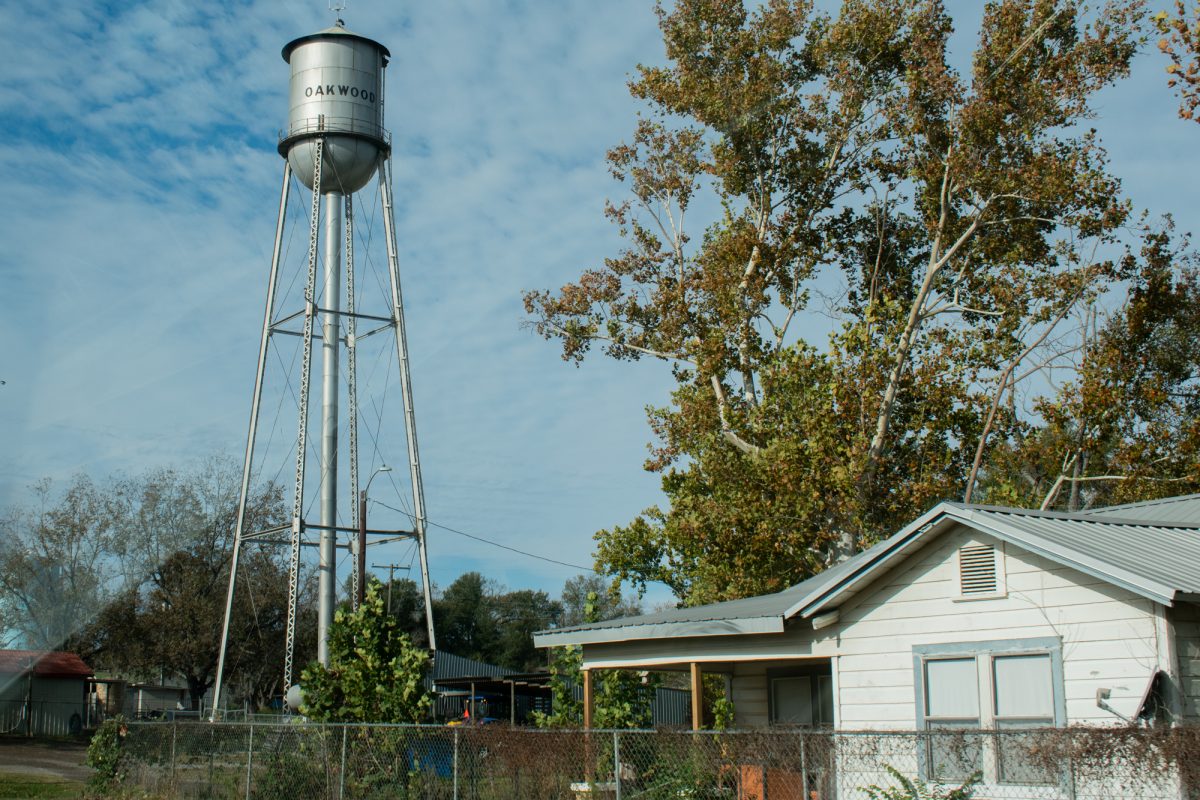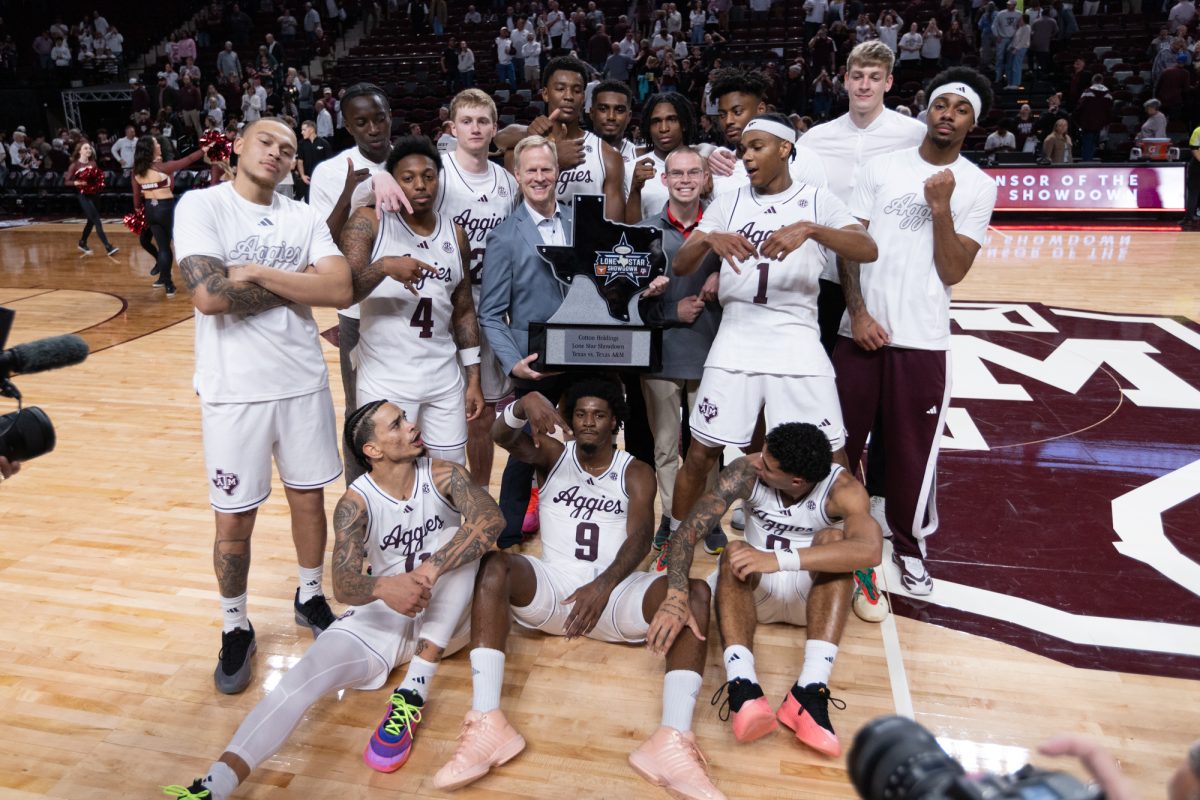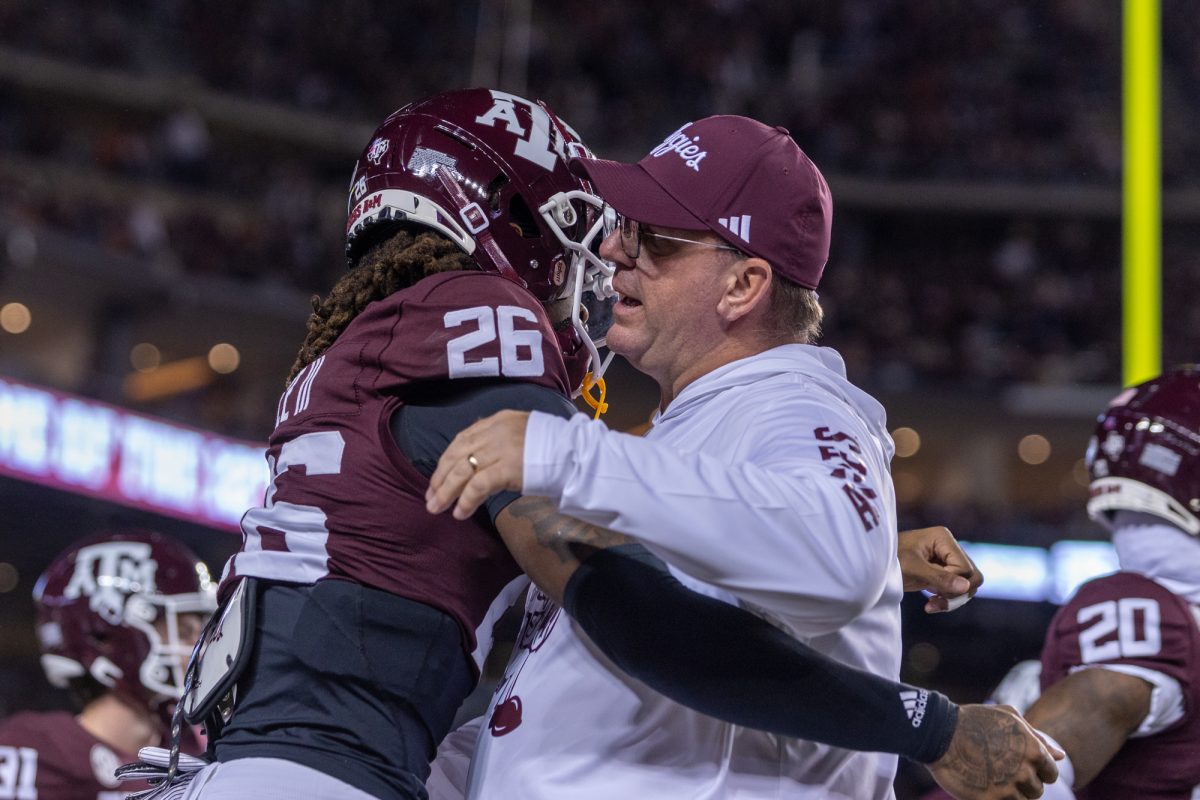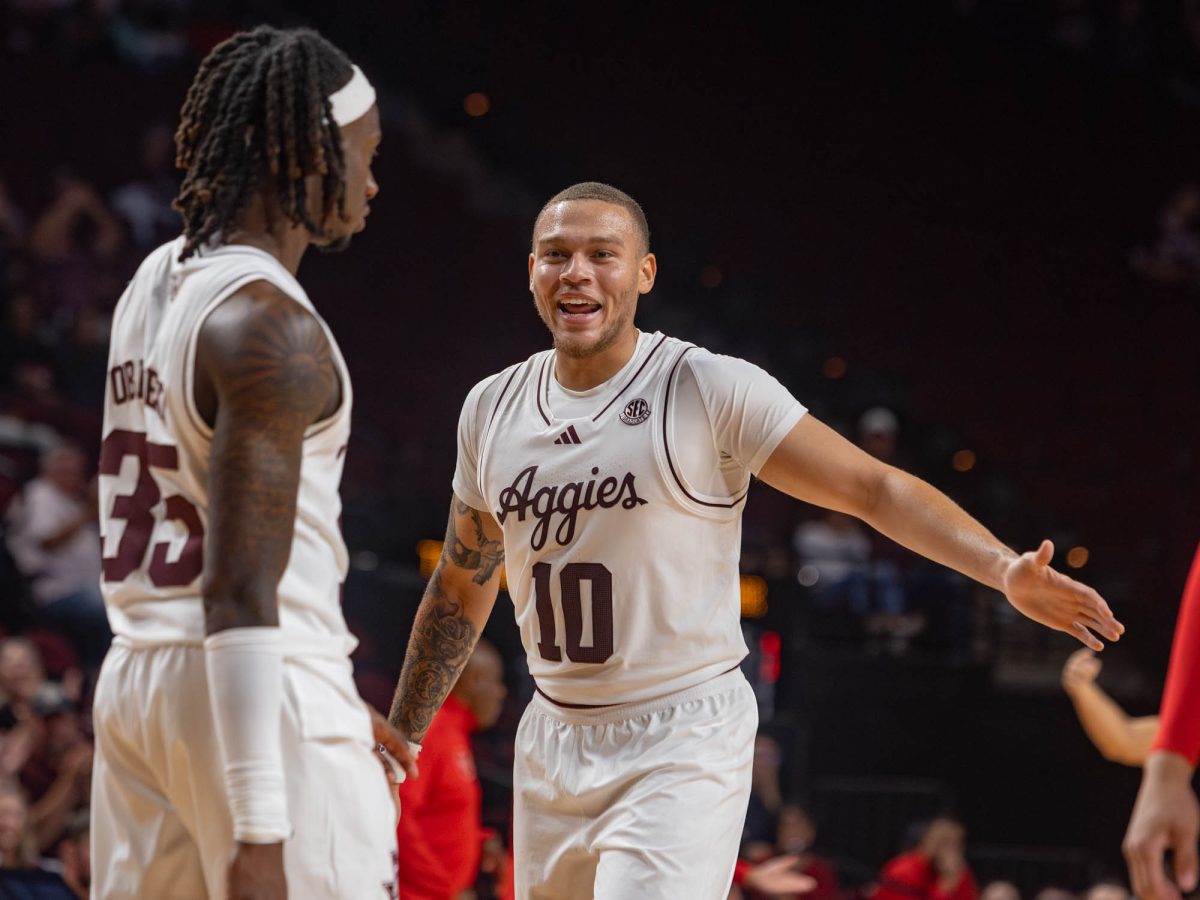As I wandered somewhere in between the Brazilian carnival dancers and luchador masks that surrounded Kyle Field in the hours before the June 8 soccer match between Mexico and Brazil, I met a fan who in some ways represents the future of college athletics.
Arihant Reinosa and his family — each clad in a matching Brazil jersey — aren’t super fans who travel far and wide for every Seleção match. Originally from Cuba and living in College Station, the Reinosas are proud Brazil supporters who repeatedly expressed just how excited they were for the match.
Then he said something that stuck with me.
“College Station is on the map of the United States,” Reinosa said. “If they decide to come here, it’s because this place means a lot — for soccer, but for us in general. We are all very excited to be here in this small town with a big story.”
Reinosa is right about one thing: The eyes of the world are on College Station, and they’re on Kyle Field. Between the match and the George Strait concert a week later that broke the record for highest-attended ticketed concert in the United States, the stadium has suddenly become a premier destination for all sorts of non-football events.
Now the question — one asked by Texas A&M athletic director Trev Alberts himself via X — is simply what comes next? What team, event, or show is going to energize fans the way Mexico-Brazil energized the Reinosa’s (and conveniently give a shot in the arm to the local economy and line the pockets of A&M athletics)?
The answer? Stick with soccer, capitalize on the rise of women’s sports and bring the United States Women’s National Team to Kyle Field.
A brave new revenue world
The Brazil-Mexico match and the George Strait concert at Kyle Field were both planned before Alberts was hired at A&M, but he has repeatedly stressed the need for the Aggie athletic department to find new revenue streams in the wake of the seismic changes — like new Name, Image and Likeness rules — that have transformed the financial structure of college athletics.
“It’s a shifting mindset,” Alberts said during a May 1 press conference. “Across college athletics — especially in college football — most of the time you’ve got an incredible asset sitting there empty other than seven Saturdays in the fall. And so all of us in athletics, we’re trying to think about ‘How do we activate these spaces? How do we look for new opportunities?’”
In short, the question becomes: What can the Aggies do to bring in new types of fans the same way Mexico-Brazil drew in the Reinosas?
But there has to be a balance between what will bring in people (and dollars) and what A&M wants to attach itself — and its most famous physical asset — to.
“If it makes sense, we’ll entertain anything that can advance the brand of Texas A&M,” Alberts said. “And not just Texas A&M athletics, but the entire institution. This is a global brand when you really think about it and the impact that this university has worldwide. I think these types of events emphasize that reality.”
The answer to both questions involves promoting women’s sports. Not only is it the morally correct thing to do, but women’s sports are making money — and lots of it.
Athletes like the WNBA’s Caitlin Clark and Angel Reese are household names, and other colleges are capitalizing on that. Last season, Clark’s Iowa Hawkeyes hosted a women’s basketball game at Kinnick Stadium that drew over 55,000 people.
Alberts knows this too. While he was AD at Nebraska, the Huskers hosted a Volleyball Day at Memorial Stadium that set a record for a women’s sporting event in the United States with 92,003 fans in attendance. And even before that game, Nebraska’s volleyball program was the only Power 6 program to turn a profit — a rarity among what is traditionally considered a “non-revenue” sport.
“This is going to be a celebration of women’s athletics, a celebration of volleyball,” Alberts said via the Huskers’ YouTube channel before the match. “We just want to thank everybody for their focus.”
Both Memorial Stadium and Kinnick Field have turf fields while Kyle Field is natural grass, which means the latter might not necessarily be able to host an Aggie volleyball match or women’s basketball game during the middle of football season.
But the Aggies have proven that they can host a major soccer match. So why not partner with the USWNT, the one team that’s done more to advance women’s sports than any other in the three decades since their first FIFA Women’s World Cup title in 1991?
And to keep both the A&M and U.S. Soccer marketing folks happy, there are plenty of records that are just sitting there waiting to be broken if this match does come to fruition.
Made to be broken
Let’s play a game of numbers.
Kyle Field has a listed capacity of 102,733 seats. The Mexico-Brazil match in June drew 85,249 fans, good for the third-largest crowd to attend a Mexico-friendly match in the United States.
It’s hard to imagine that there would be any realistic international draw that would be bigger than Mexico and Brazil, given the constraints of geography and FIFA calendar windows. Especially considering the U.S. Men’s National Team is known for its attendance woes — the Yanks haven’t drawn a crowd of over 70,000 on home soil since 2016.
But bringing the USWNT makes it a different story. Not only is it an event that will energize more than just soccer fans, but there are several records that could realistically be broken with a crowd that wouldn’t have to match Mexico-Brazil.
In April, the USWNT set a record for its highest-attended friendly on home soil with a crowd of 50,644 in Atlanta’s Mercedes-Benz Stadium. The highest-attended women’s soccer international friendly in the world is 77,768 set during an England-Germany match in 2019.
And as I mentioned before, Alberts already helped set the record for the highest-attended women’s sporting event in the United States.
Go big, or go home
With the USWNT about to begin the Summer Olympics in Paris, they’ll have four years to prepare for the Olympic Games on home soil in Los Angeles in 2028.
And the stars that became household names during the World Cup championships in 2015 and 2019 are largely gone. Alex Morgan was left off of this year’s Olympic roster, and Megan Rapinoe retired after the 2023 Women’s World Cup. For better or for worse (and likely for worse), those are the names that the average American still would name when asked about the USWNT.
The talent is there, as usual — the USWNT is ranked fifth in the world by FIFA. But by the next World Cup in 2027 and the LA Olympics in 2028, does U.S. Soccer really want to be repeating the same factoids over and over trying to get its players promoted to a larger audience? You can only say that Trinity Rodman is Dennis Rodman’s daughter so many times.
So it’s time to go big or go home. Make this Kyle Field game a production, a spectacle and an event that will turn what would normally be a lame-duck window in the international calendar in the summer of 2025 or 2026 into an unforgettable scene like we saw with Mexico and Brazil that would cement the names and faces in the USWNT in the public conscience well before the traditional pre-World Cup media cycle — and making Texas A&M a household name in women’s sports at the same time.
Start making the phone calls, Mr. Alberts. If you’ve done it once, you can do it again.






















